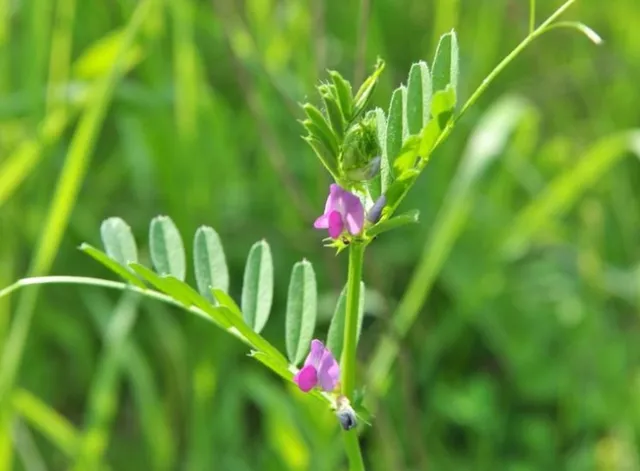Using Cover Crops
Cover crops are crops that are put into the ground to enhance and renew the soil with nutrients and organic matter. It is used mainly in the spring and the fall, often to cover the soil rather than for a cash crop. The benefits, whether in your backyard or in a commercial garden of many acres, is that a cover crop will manage soil erosion, soil fertility, soil quality, water, weeds, pests, diseases, biological diversity, and pollinators.
Cover crops preserve the topsoil not allowing it to erode away, especially if the land is on any kind of slope. Soil attacked by wind and rain during the winter months can be further preserved and kept in place if a cover crop is used. When it rains on bare soil, it is, of course, much more likely to erode, form a hard crust, and then overheat in summer when exposed to the direct sun. If it gets hot enough, the sun will kill many organisms in the soil. Cereal rye is a great crop to use to prevent this from happening.

Cover crops also directly feed bacteria and fungi (most of which are beneficial to crops) who are then eaten by many other organisms, including earthworms and arthropods, who enrich the soil even more. Speaking of earthworms, (surely the most visible of the many organisms living in the soil), cover crops typically lead to much greater numbers and types of earthworms in the soil. Since some earthworms tunnel vertically (i.e., nightcrawlers) and others (i.e., redworms) tunnel horizontally, the effect in the soil is that they create growth channels for crop roots and for rainfall and air to move into the soil.
Cover crops add to crop diversity. Growing mixes of cover crops or adding different ones to your rotation each year only improve the different organisms, improving diversity. Ideas for this might be crimson clover before corn, or cereal rye before soybeans.
Earthworm activity isn't the only thing that opens up the soil to let the rain in. Also, the roots of the cover crops themselves are greatly beneficial, particularly when tillage is not used much. This extra rain that this provides, instead of running off, can make a huge difference in the yield of your garden.
The typical solution to soil compaction is tillage but that provides a very short period of benefits while bringing along side effects (some long term) of their own. Excess tillage destroys soil structure. Conversely, cover crops and the soil organisms they feed create the glue (glomalin) that binds soil particles together, leading to strong soil structure. Cover crops, assisted by earthworms, build up the soil and its structure and help loosen compacted soil more effectively than tilling.

We don't have to mention how we depend on our pollinators in so many ways, but when planning your cover crop garden, an easy way to ensure that you keep pollinators busy there is to include species of plants that flower at different times so that pollinators have a food resource throughout the season. Buckwheat and sunflowers are a great choice because they have a longer flowering period compared to fall-planted cover crops. Vitally important as well is to be sure to allow your cover crop to flower through peak bloom. You can use a cover crop guide to choose which plants best suit the needs of your garden while still providing cover crops that are attractive to pollinators. Avoid using insecticides on or where it could drift into your cover crops.
In general, cover crops are an efficient and indispensable tool to use in any garden. Studies around the world have shown that cover crops can increase crop yield even after just one year. Cover crops should be viewed as a long-term investment in improved soil health and management.
For more information about cover crops:
Cover Cropping in Home Vegetable Gardens - Sacramento Master Gardeners
Choosing and Using Cover Crops in the Home Garden and Orchard
Cover crop Solution Chart
